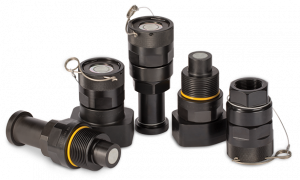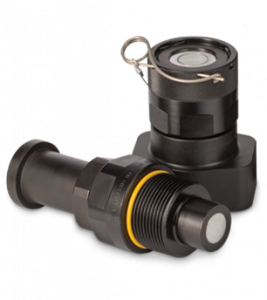 Stucchi’s VEP Series of threaded flat face couplers provide solutions where other couplers fail. With a thread-to-connect and Stucchi’s flat face leak-free design, the VEP provides a wide range of coupling solutions to many heavy-duty applications with heavy-duty and locking features. If you are enjoying the benefits of the VEP in your application and want to know how to troubleshoot the VEP, Stucchi offers solutions to the most common problems with VEP couplers.
Stucchi’s VEP Series of threaded flat face couplers provide solutions where other couplers fail. With a thread-to-connect and Stucchi’s flat face leak-free design, the VEP provides a wide range of coupling solutions to many heavy-duty applications with heavy-duty and locking features. If you are enjoying the benefits of the VEP in your application and want to know how to troubleshoot the VEP, Stucchi offers solutions to the most common problems with VEP couplers.
How to Troubleshoot Common Problems With VEP Couplers
The most common issues with the VEP are similar to common problems with flat face couplers, although slightly different as the connection to hold the set together is threaded, and the male has a connect under pressure valve that may keep the male from showing leakage disconnected while allowing it connected. The most common issues encountered with VEP couplers include:
- Leaking while connected or disconnected
- Difficulty to connect
- Difficulty to disconnect
- Flow restriction from un-wanted partial disconnection
Leaking
Perhaps the most common problem users might encounter with VEP couplers is leaking. Leaking can be caused by damaged seals, contamination, or from damaged components. Potential causes of leaking include:
- Damaged or Missing Seal
- Contamination
- Damaged Components
First, determine which side is causing the leakage. Most often, when the set is leaking connected, the male interface seal is the source. Even though the female components will have the most oil on their surfaces, the male interface seal is likely suspect. This can be checked by disconnecting the set, depressing the male piston, and observing the interface seal.
If contaminants or damage is visible, try repairing with a seal kit to correct. The male may only leak when connected and may not leak disconnected. This is related to the connect under pressure valve design.
If the female is observed to leak, it may only leak when disconnected. The female is not cost-effectively repairable, so often it is our suggestion to replace it with a new part.
Difficulty to Connect
Another common issue users may experience is difficulty to connect a VEP set. This is typically caused by damaged interfacing threads, excessive contamination, or connecting with constraints from mounting or from hose routing.
Causes of difficulty in connecting the VEP include:
- Damaged Interface Threads
- Contamination
- Mounting or Hose Routing Constraints
Inspect the interfacing threads for any damage preventing connection and replace those parts as needed. Also, wipe the parts clean from contamination to allow the valves to slide freely when connecting.
Finally, try to position the coupler set where there is adequate and ergonomic room to connect. Connecting large sizes may be difficult to connect inherently from the size, weight, and spring force in the design. Consider changing the locking mechanism to a thread to connect or pin/cam system that gives the user more mechanical advantage to connect in these cases.
Difficulty to Disconnect
If a set is difficult or impossible to disconnect, it may be caused by damaged components, torsional forces applied to the coupler set while connected, or from attempting to disconnect with too much pressure inside the coupler set.
Difficult Disconnection Causes:
- Damaged components
- Externally applied torsion (from vibration, impulse, or swinging of attached hoses)
- Too Much Residual or Trapped Pressure When Disconnecting
First, inspect the female sleeve to check for damage that may have been caused during use. If damage is visible, the female coupler may need to be replaced. During use, the coupler can be exposed to torsional forces that can tighten or loosen the interface thread. If this is the case, consider the use of a live swivel to dissipate that force or make changes to hoses to minimize this force from applying to the coupler set.
If the set is partially disconnecting during use, consider using the VEP HDL series that includes a locking pin to ensure full connection. If the set still will not disconnect, try to relieve system pressure, as trapped pressure will apply force to the locking mechanism and will prevent the components from moving to the disconnected position.
Learn more about the:
- VEP Series – Threaded flat face
- VEPHD Series – Heavy Duty
- VEPHDL Series – Heavy Duty Locking
Watch this video on How to Use the VEP, including information on accessories and the many benefits the VEP Series provides, often delivering solutions where other quick couplers fail.
Stucchi is a leading provider of hydraulic quick coupling products, including first-to-market, innovative, and custom-designed hydraulic solutions. With more than 60 years in business, our hydraulic specialists provide vast market expertise and in-depth knowledge to meet your fluid power requirements. Contact us to learn more about the VEP Series threaded flat face coupling and how to troubleshoot the most common problems with the VEP.


